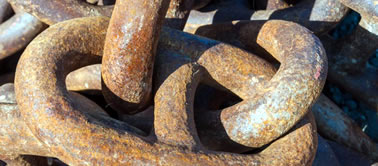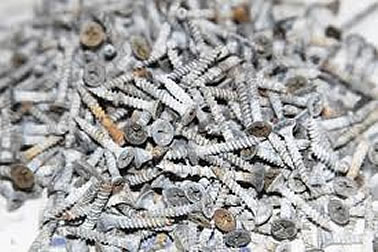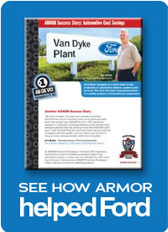 |
||
 |
||
|
A Primer on Phosphate Conversion Coatings, Use, Application and VCI by Brian M. Knapp
Among the more common metal surface treatments is the phosphate coating process. This process provides an electrically non-conducting, reasonably hard coating of an insoluble phosphate that adheres to the metal surface. Phosphate coating may provide lubricity, enhanced corrosion resistance or it may serve as a foundation for coatings or paint. Manganese and zinc phosphates are also used to help break in parts that are subject to wear and to prevent galling (a form of wear caused by friction and adhesion between sliding surfaces – causing sticking or welding and the loss of metal from one to the other). Zinc phosphate is frequently used with sodium stearate for lubrication in forging processes. A phosphate coating may be applied to a variety of substrates. There are three main types of phosphate coatings: zinc, manganese and iron. Zinc phosphate is primarily used for corrosion resistance (phos & oil), wear resistance, lubricity or as a base for subsequent coatings. It may be applied by spray or immersion processes. Manganese phosphate is used for corrosion resistance, wear resistance and lubricity and is applied exclusively by an immersion process. Iron phosphate is typically used as a base for further coatings as it promotes adhesion and it may be applied by spray or immersion. The application is the result of phosphate salts dissolved in a phosphoric acid solution which produces a chemical reaction with the surface of the metal part to form an insoluble, crystalline phosphate. When the iron, zinc or manganese salts are dissolved in a phosphoric acid solution and come into contact with a metal surface, a metal/acid reaction takes place. This reaction depletes the hydronium ions, locally raising the pH of the solution. As phosphates have low solubility in medium or high pH solutions, the dissolved phosphate salts fall out of the solution and precipitate on the component’s surface. In addition, the acid/metal reaction creates iron phosphate (with ferrous substrates), which may also be deposited. In the case of manganese and zinc phosphate, the iron phosphate may be considered undesirable. As the reaction takes place it generates hydrogen gas bubbles which may adhere to the surface. This will slow the deposition process. To address this issue, an oxidizing agent may be added to react with the hydrogen to form water and prohibit a reduction in the process speed. Performance of the phosphate coating is dependent on the crystalline structure and the coating weight. Micro crystalline structures are generally best for subsequent painting while a coarse grain structure is more desirable for applications that will see oil or require wear resistance. The typical application sequence would be:
The phosphate coating, in itself, provides limited corrosion resistance and therefore is often used in conjunction with sealers, coatings, paints or oil. Because of this limited corrosion resistance, processed parts may require additional protection during storage and shipment. The corrosion associated with phosphate coated parts may appear different than the red, brown, yellow or black rust that we usually think of. The phosphate coating may be referred to as a sacrificial coating as it is often only expected to provide protection for a limited time and when gone the part may be expected to rust in a more conventional way.
The beginning stages of rust formation on these zinc phosphate-coated metal screws demonstrate the limitations of using phosphate coatings alone in the prevention of corrosion. One way to ensure that your components are properly preserved during storage and shipment is to utilize Armor Protective Packaging’s® VCI (vapor corrosion inhibitor) technology. These various packaging materials provide corrosion inhibiting vapors that protect your product and are specifically designed to provide the very best protection for each particular type of metal, finish and combination thereof. For more information on Armor Protective Packaging®’s full line of corrosion management products, visit the ARMOR website or contact your ARMOR sales representative. |





